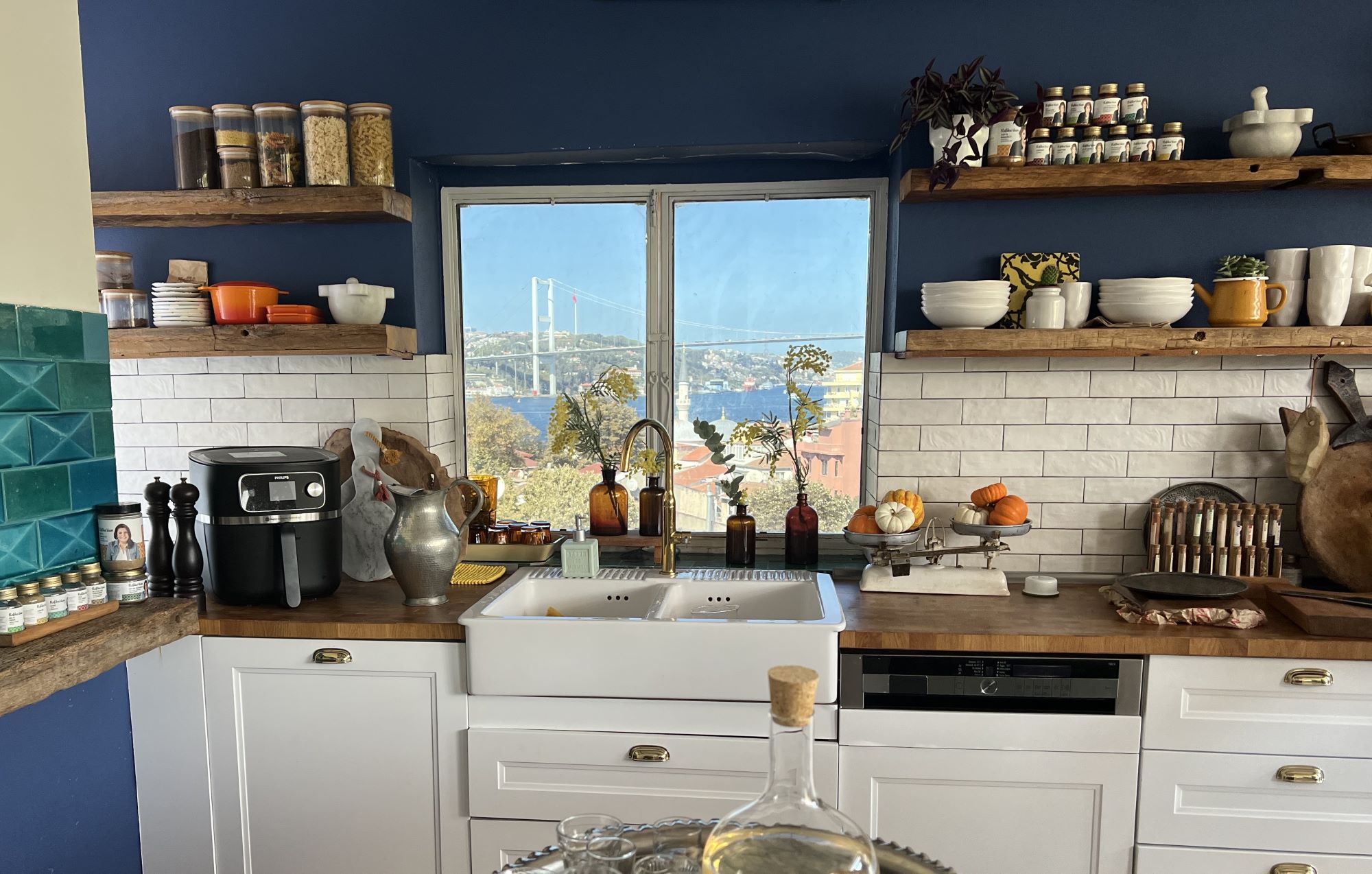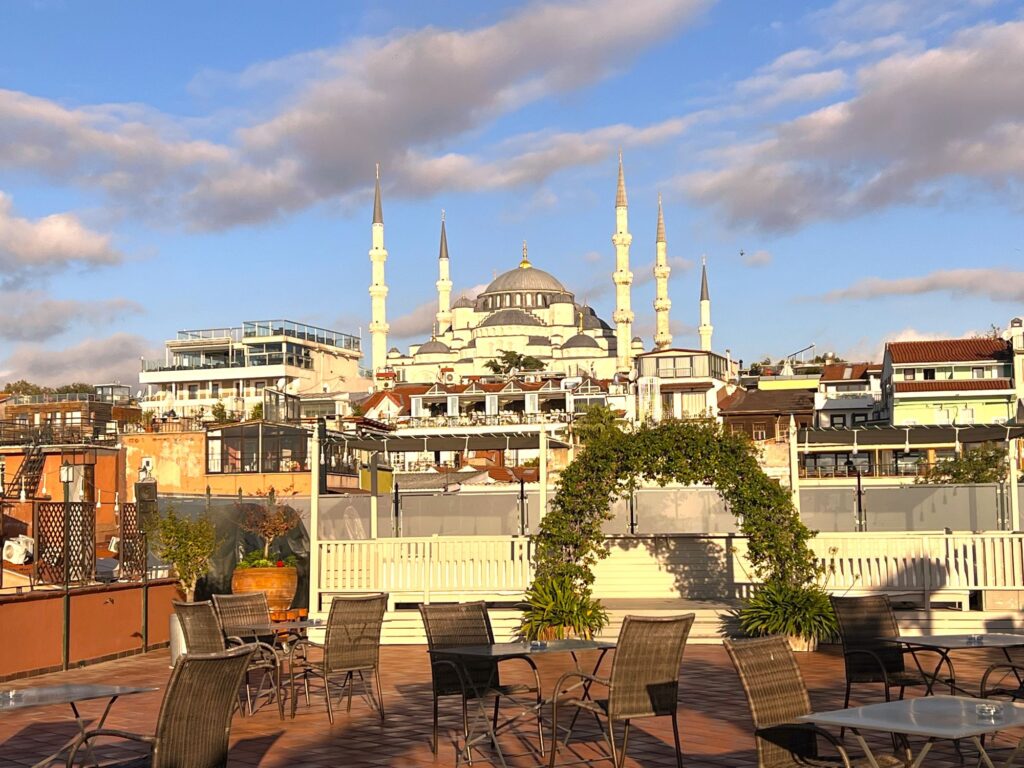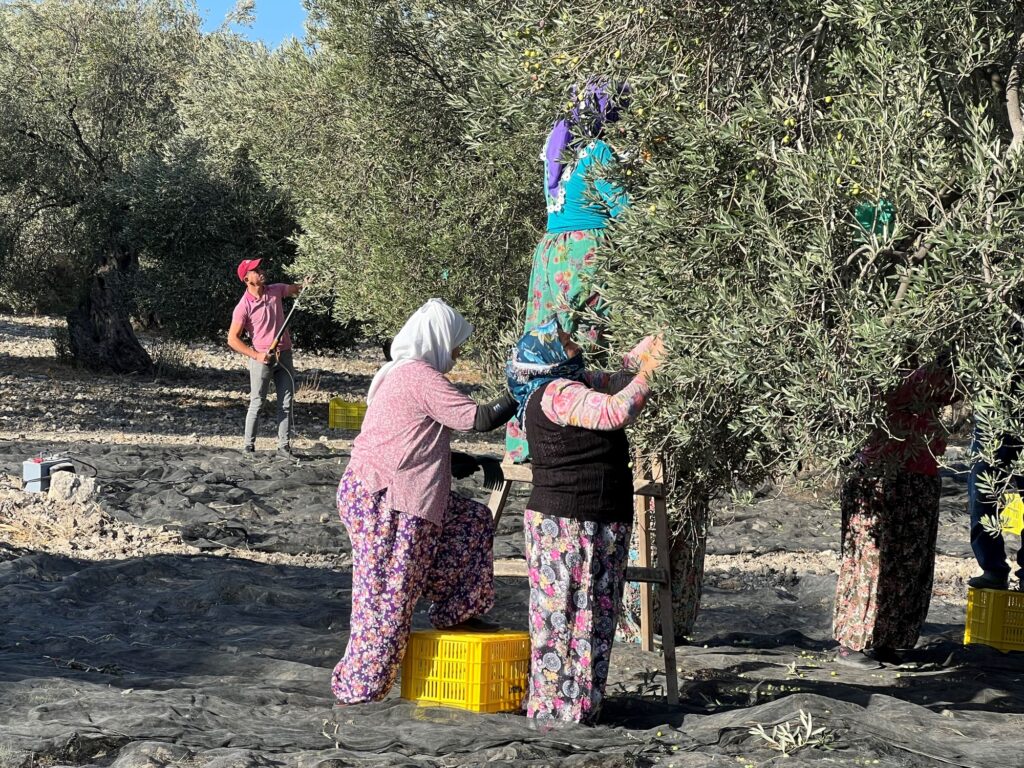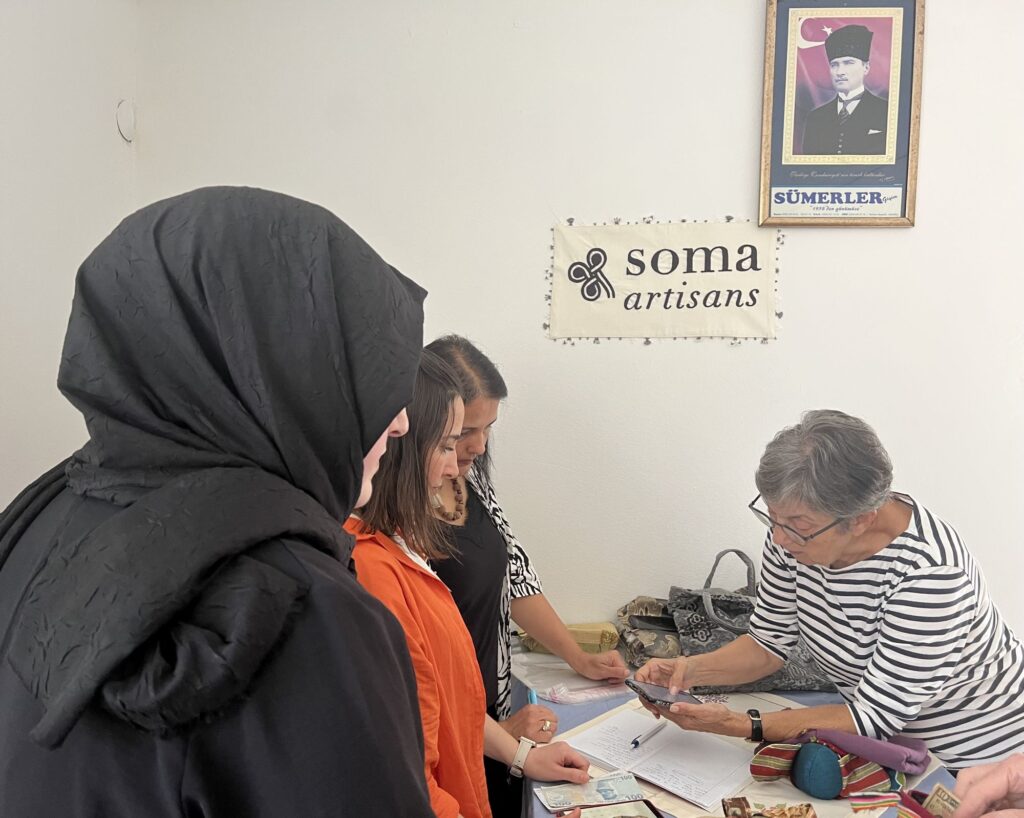It is January 1, 2024 and fitting that I should be wrapping up my reflections on my culinary tour to Turkey with my own memories of “friends and family” New Year’s Day traditions. Ten days of culinary travel in Turkey and the powerful communal experience of preparing and enjoying food reminded me of valued traditions around the “shared table” and have inspired me to modify my longtime routine of eating “on the go.”
Traditionally on this first day of the year, our Midwestern family would gather with relatives and friends for an extended party. The kids would play in the basement or outdoors, the adults hover around the TV for the Rose Bowl and the tantalizing aromas from the kitchen would eventually deliver Mom’s much-loved “smokehouse spaghetti” – a comforting, absolutely delicious artery-clogging combination of cheese and meat, cooked in an oversize crockery casserole. Each New Year’s Day repeated itself – an ample buffet and football. We’d gather from short and long distances, from cousins and in-laws to children and extended family, for cocktails and beer and our other holiday favorite, “Scramble” (now popularized as “chex mix”) that came from my grandmother, who surely was an early adapter of Mr. Kellogg’s brands.
How does this relate to Turkey? Because Big Ten Football and food united us. And so, today for some odd reason, I’ve been musing on these connecting links of food and friendship that seemed to capture the hospitality we enjoyed in Istanbul in the homes of two remarkable women and in the kitchen with professional chef-innovator Refika Birgül.
In sum, our culinary adventure presented by Anatolian Artisans was, most importantly, an intimate exploration into Turkish culture, the culinary mecca of Istanbul, the food-as-geography context of the Aegean and the fusion of multiple nations influencing the East-West global crossroads of Anatolia.
At Home in Istanbul
On our second evening in Istanbul, our host was Emine Usakligil (@emineusakligil on Instagram), a Turkish journalist whose grandparents founded the first secular newspaper in the newly formed Turkish Republic after World War I. She also is famous for her dinner parties. In her fashionable contemporary apartment, nestled on an urban hillside, her dinner buffet of traditional Turkish specialities featured hamsili pilav, the aromatic baked anchovy and rice dish fusing the small tasty fish from the Black Sea region with seasonal local agricultural staples, mainly rice. Her home and her warmth embraced us with refined Istanbul hospitality, symbolized by serving hamsili pilav.
Near the end of our tour, we were introduced to another subculture within Istanbul’s polyglot flavors in the home of Deniz Alphan (@dalphan on Instagram), who is Turkish and Jewish and married to a Muslim. A writer and director, she has written a book and directed a documentary (“A Fading Language, a Fading Cuisine”) on Istanbul’s Sephardic Jewish culinary traditions. The Sephardic community arrived in Turkey more than 500 years ago after expulsion from Spain by Queen Isabella who wanted a Catholic nation. Once a sizable contingent of Istanbul’s ethnic mix, today there are only about 1700 Sephardic Jews in Istanbul, Deniz told us.
Over the centuries, traditional Sephardic cooking was passed from mother to daughter. Sephardic Jewish and Turkish cuisines historically have shown considerable overlap in their favor of color and aroma and in the centrality of gracious dining in their cultures. Take for example the empanadas she served, and the frequent use of eggplant, which this evening found its way into a dish of smoked mashed eggplant with Feta cheese, pilaf, meat and oregano. Food resources were revered and not wasted – to wit, the zucchini peels flavoring another platter. Deniz’ enthusiastic personality animated this sparkling evening, we finished with a selection of Sephardic Turkish pastries. The blend of Sephardic and Turkish influences in her dishes was another example of the vast culinary fusion that Turkish cuisine represents as a global geographical crossroads for centuries.
In Refika Birgül’s Kitchen
Kuzguncuk, a Bohemian district on the Asian shore of Istanbul, is recognizable for its café-lined streets populated by artists and intellectuals, a visual blend of Manhattan’s East and West Villages. Along one of these narrow passages, food enthusiast Refika Birgül (has renovated a 100-year old building; its rooftop terrace has breathtaking views of the Bosporus Sea and Istanbul shores; its seven kitchens, wired for filming and TV demonstrations, are set up for teaching. We washed our hands with lemon sanitizer as we tasted a refreshing drink concocted from wisteria syrup. “When I went to the American school,” Refika tells us, “there was a wisteria tree outside. I believe memory, food and smell all should combine together.”
Refika calls herself “a big introvert doing a very extrovert thing” as a TV personality and teacher. Her Turkish language culinary channel on You Tube has 1.75 million followers, with the English language version at nearly 700,000. Exuding enormous energy and supportive motivation, she has written five cookbooks, produced several TV shows and is a founding partner in a cookware brand. “I believe Anatolia has a lot to offer the world in terms of culture – initially mixing Armenian, Jewish and Turkish cuisines. But now other immigrants are changing that, so how can I do something which has the traditional ingredients but is more creative?”
From her rooftop deck we can see a mosque, church and synagogue in one view in the foreground, all sharing a garden. It is an arresting image in this now Muslim nation where tolerance is constantly in question in the headlines yet is practiced discreetly and proudly in convivial neighborhoods. Refika’s building was built by a Jewish family, who left a stone inscription in Hebrew over the door. In fact, until the 1950s there was no mosque in Kuzguncuk, then primarily Armenian and Greek Christian. Across the cobblestone street, her charming shop sells branded culinary products and tools.
In Cooking New Istanbul Style (2010), which focuses on original ingredients, equipment, recipes and presentation, Refika describes Turkish cooking as “one of the world’s earliest fusion cuisines.” As an improviser, Refika believes that “no recipe has just one way,” and we are treated to a wide assortment of flavors in each dish. I have been astounded by not only the number of ingredients in each dish but also by the number and variety of tasting dishes on any table during our tour. This fusion cuisine incorporates tradition, but also permission to experiment.
“There are three types of cooking,” she told us, “palace cuisine (a fusion that is too sophisticated to make on a daily basis); Anatolian cooking (whatever is in your garden); and “mixed Istanbul,” such as dolmas (stuffed leaves) and köfte (meatballs, of which “there are 350 varieties”) – consequently, food that is “both individualistic and collectivistic.”
The menu included tarhana soup (based on halloumi cheese, yogurt, bulghur and garlic); a pilaf with red lentils, caramelized onions and bulghur; two types of köfte (one with meat, rice, dill and spices and another, salty with yogurt, rice and green pepper); and assorted ingredients such as molasses, quince and tomatoes often mixing sweet and savory.
Inspiration from the Turkish Table
I have so many takeaways from this trip and am only at the beginning of my journey of discovery into the Turkish table. I’ve warmed to the versatility of pistachios, pomegranate, lentils, eggplant and mint; to a mere handful of the 200 different cheeses, especially string cheese dipped in sweet grape molasses; to fresh versus tinned anchovies and sardines; to green arugula for breakfast; to the flatbreads (lahmacun) and open-faced pide with an endless array of toppings; and the multi-spice mixtures bringing bland meats and vegetables alive.
While the complexity is intimidating, I’ve found Cooking New Istanbul Style a useful primer for the basics as well as their upscale modifications. (And there are plenty of resources on the Internet.) Refika presents the mechanics of cooking and food with creative flair, yet with an approach that is practical, informative and accessible. She gives special attention to the English reader, who might need additional information and explanation. It’s an engaging approach – with such sections as “making meatballs out of anything,” “making salads out of anything” and “barbecuing and shishs” – all encouraging me to experiment.
In my nearby Middle Eastern halal market back home, I find string cheese and halloumi, grape and leaves and dolmas of many varieties in cans, rows and rows of olives, large frozen börek (meat or meat, cheese and spinach pies) for serving company, offal in nearly every conceivable part available along with lamb and other meats, boxed or tinned sweets stuffed with dates or walnuts (or both) and many kinds of Turkish Delights. I’ve been stopping in a couple of times a month to keep provisions in my pantry and freezer to integrate into my lifestyle.
“As descendants of [Ottoman cuisine], we are blessed with a rare treasure in our hands,” Refika writes. “…I hope to show how – with a bit of free spirit, aptitude and good faith – modern life might be seen as an opportunity for some of these traditions to continue and evolve.”
There are many reasons why we travel. For me, as this culinary exploration in Turkey has underscored, I venture out to be awakened – and, as a result of what electrifies or endures from that experience, changed.




